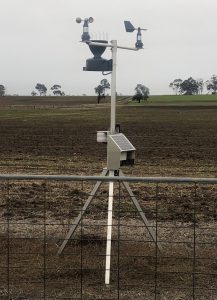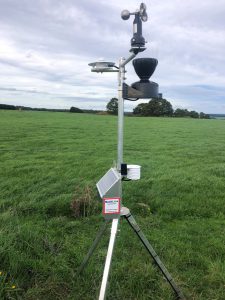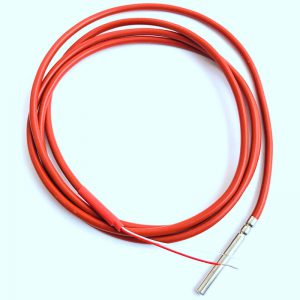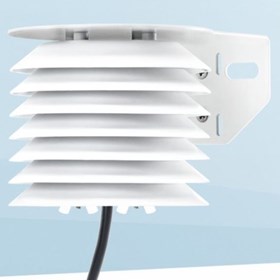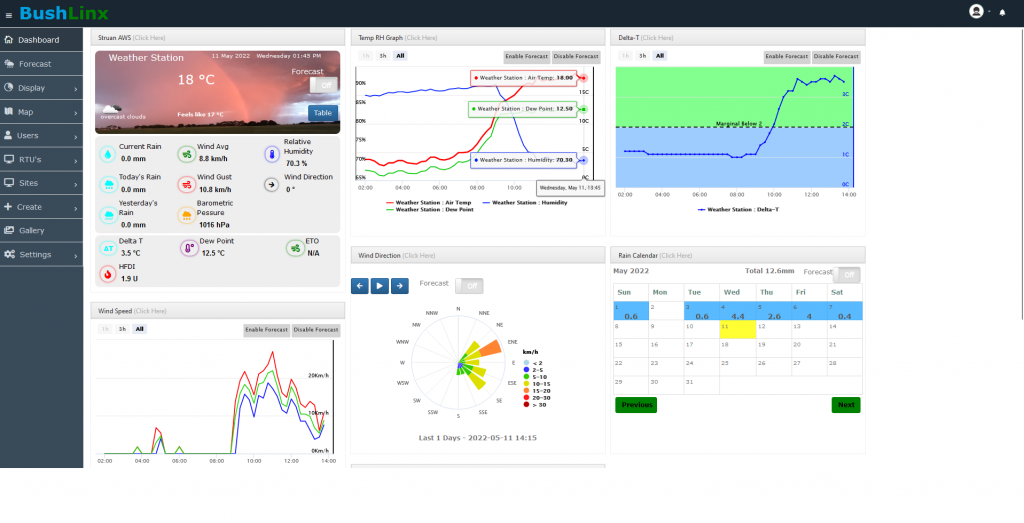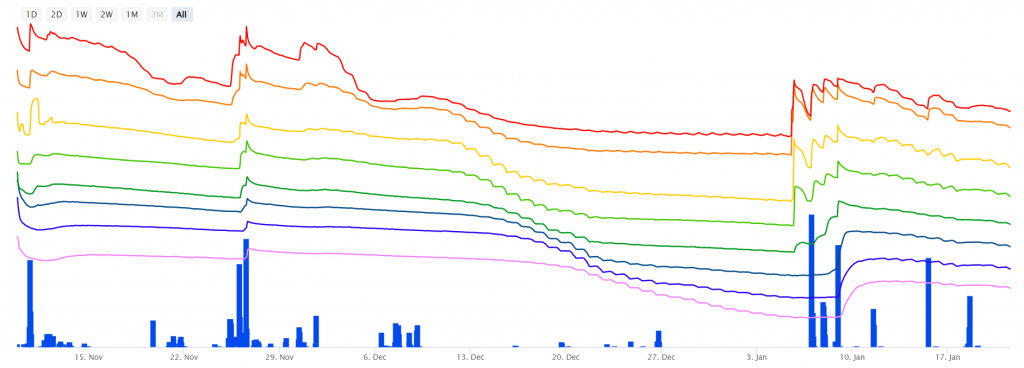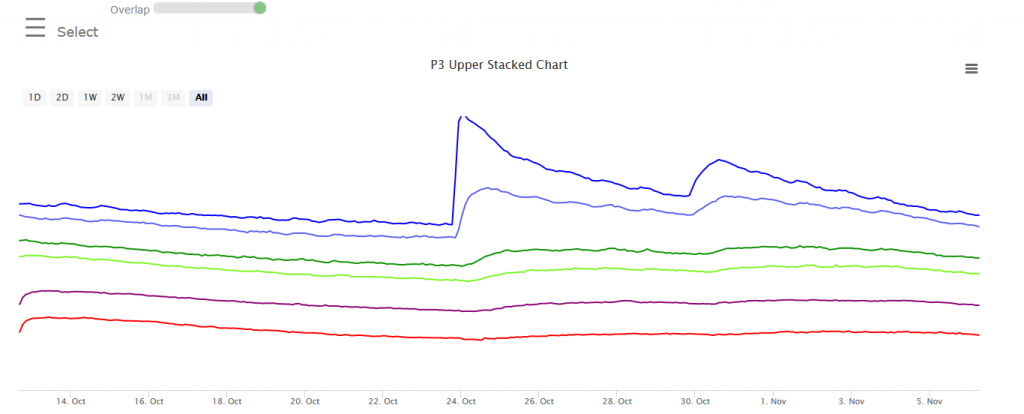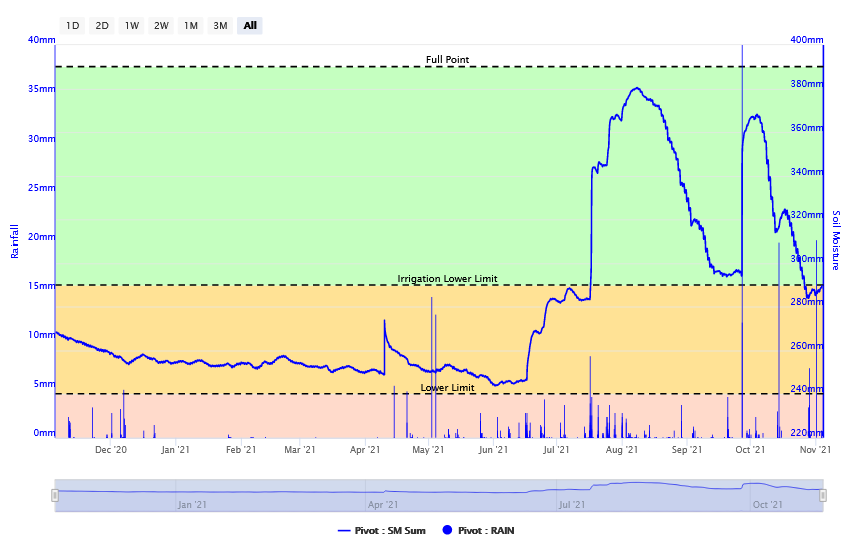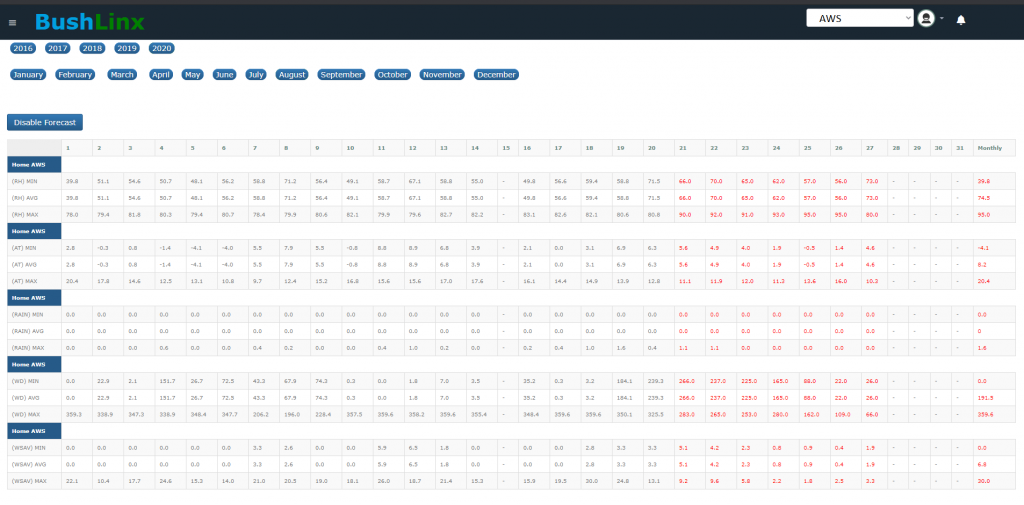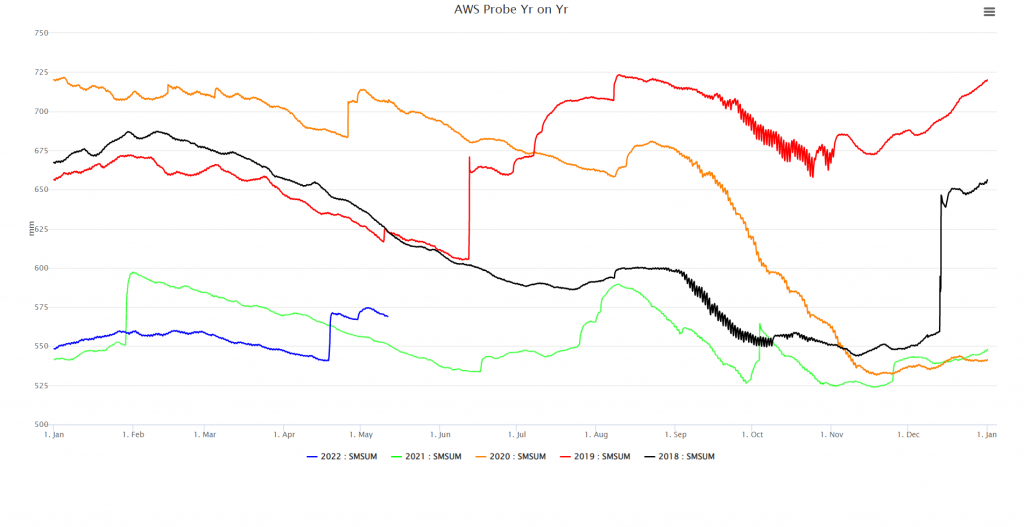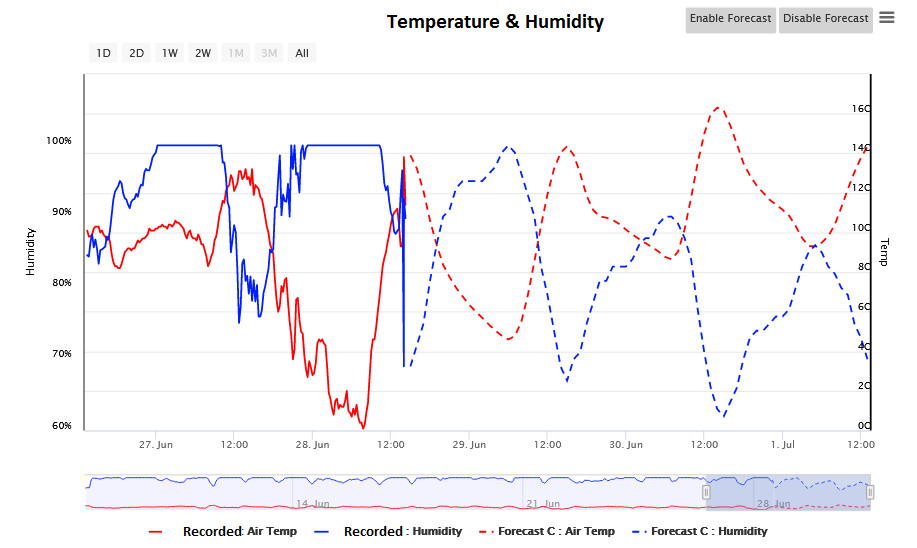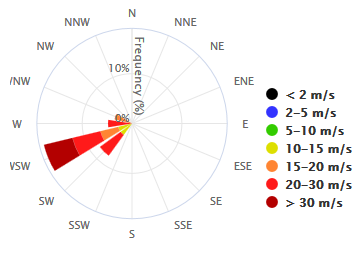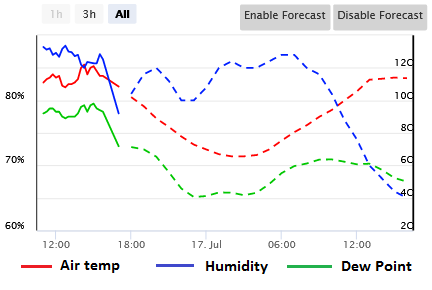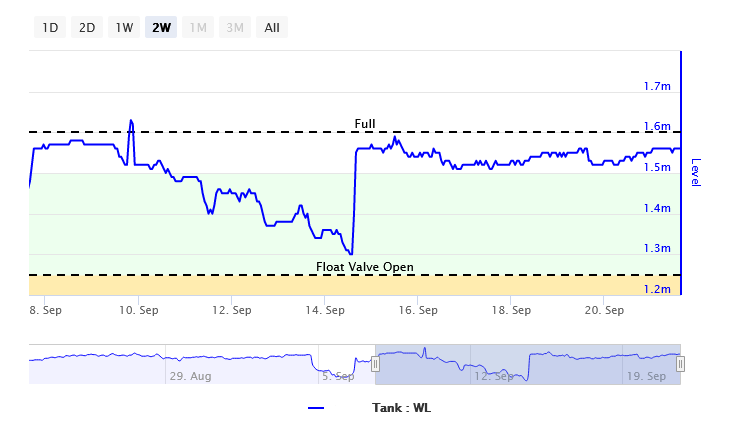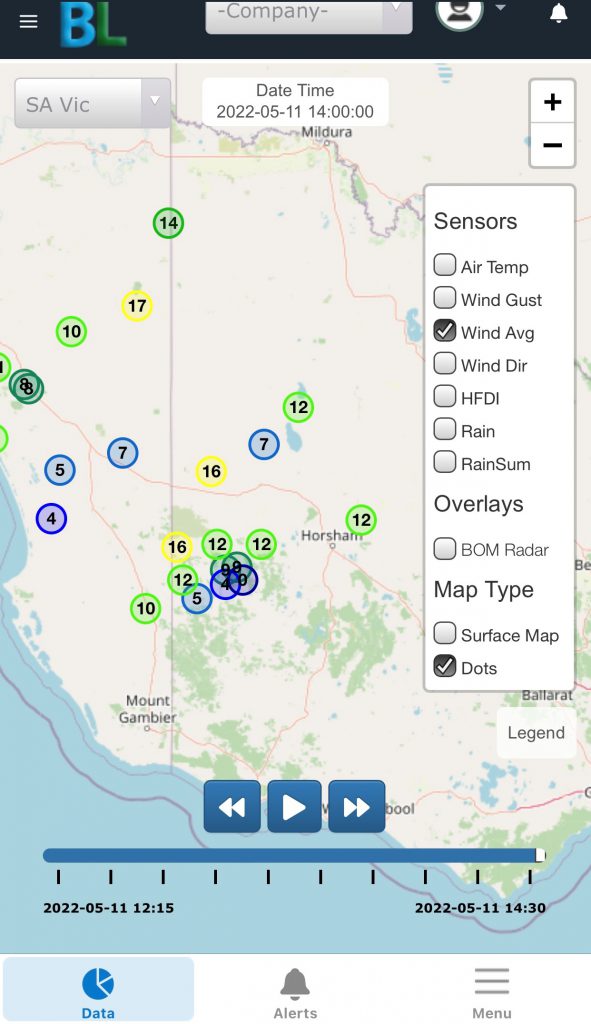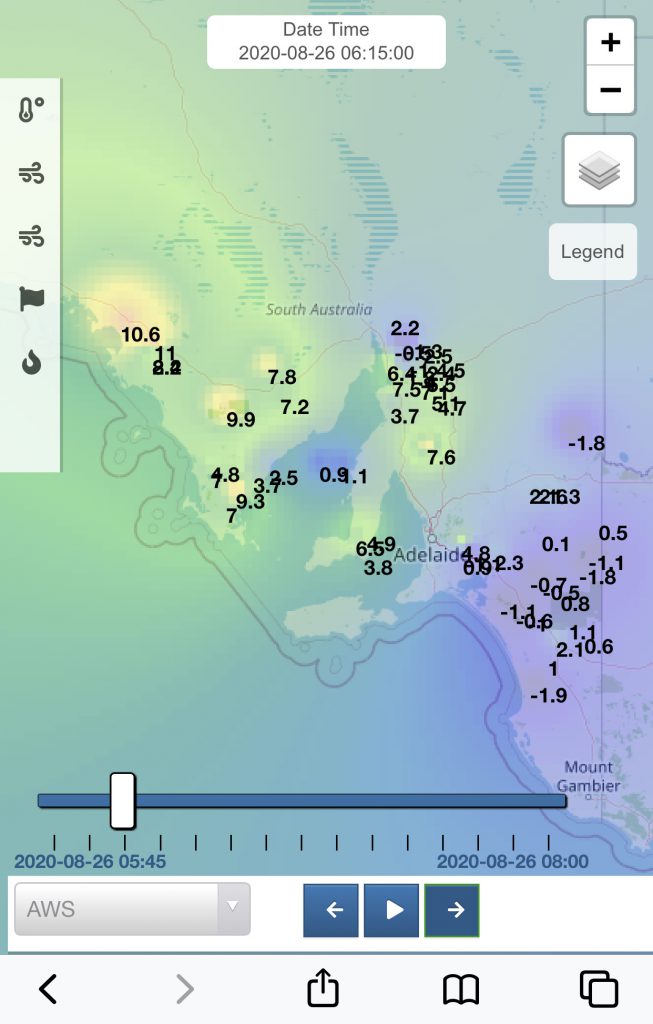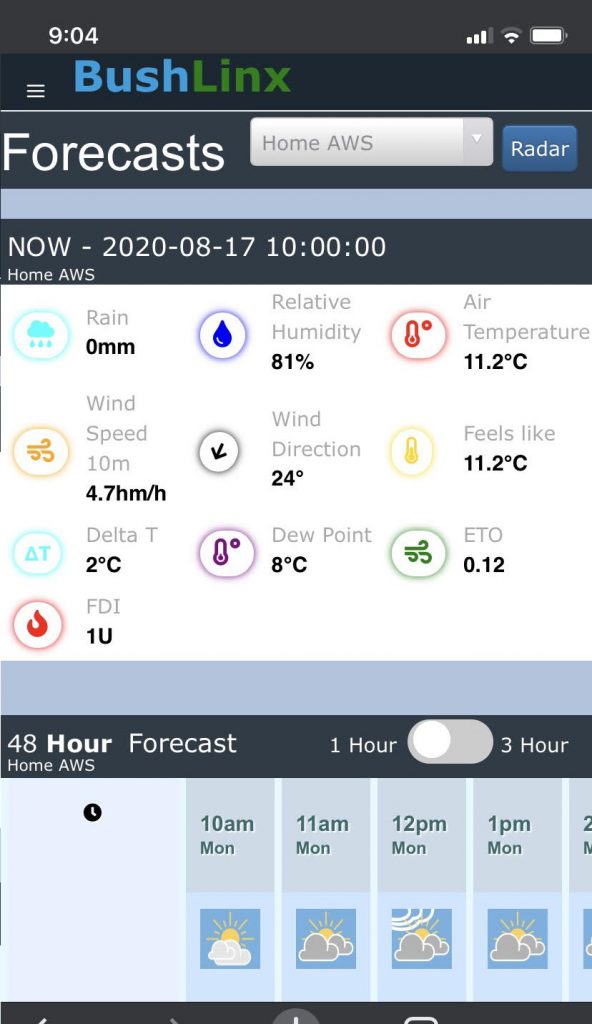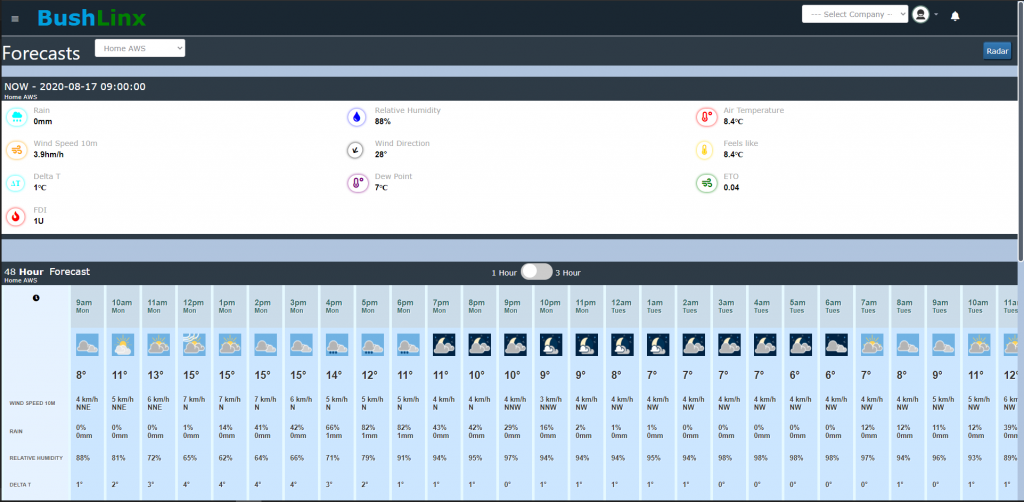Weather Stations
- WEATHER STATIONS
- Temp & Humidity Sensors
- Wind speed and Direction Sensors
- Soil Temperature
- BushLinx Display
Weather stations are used for many different purposes, ranging from simple rain gauge sites to a full Bureau of Met style ETO weather station.
Most people find data from their own weather station is far more accurate and therefore far more useful than trying to use the information from a BOM (Bureau of Meteorology) station that is most often many kilometers away.
People are surprised at just how variable rainfall is over a surprisingly small area, which has quite a profound impact on irrigation scheduling and available crop water in dry land cropping systems.
Having a weather station within your monitoring system network also means all the information (such as crop water use, growing degree days etc, etc) can be used in conjunction with soil moisture monitoring data and provide you with a far more complete picture of what is happening (production-wise) in the paddocks.
This allows you to fine-tune the production system and stop paying so much for production inputs that are not used by the crop while maximising yield and quality.
We have a full range of weather station sensors available to suit any job you have to do with weather stations.
If its a simple weather station in the back paddock or a full ETO station for irrigation and crop modeling we can supply what you need.
> Cropping station that includes all the weather sensors, Delta-T, HFDI (fire index), Dew Point and custom calculations
> Crop water use
> Crop Protection (disease modeling and frost alerting)
> Frost risk and heat/chill hours
Sensors we offer:
> Temperature & Relative Humidity
> Wind Speed & Direction
> Pyranometer (Solar Radiation)
> Barometric Pressure
> Leaf Wetness
> Rain Gauges
> Soil Temperature
> Anything else wanted
Temperature and relative humidity sensors
Sensors we stock:
Uses for these sensors include:
Spraying conditions
> Wind chill for stock
> Fire risk indexing (e.g. at harvest times)
> ETo calculation and crop water use
> Disease modeling
> Power generation calculations
Common uses for these sensors include:
> Informing seed sewing dates
> Fungicidal/spray treatment type and timing
> Fertilising dates
> Weed germination and therefore spraying dates in advance
